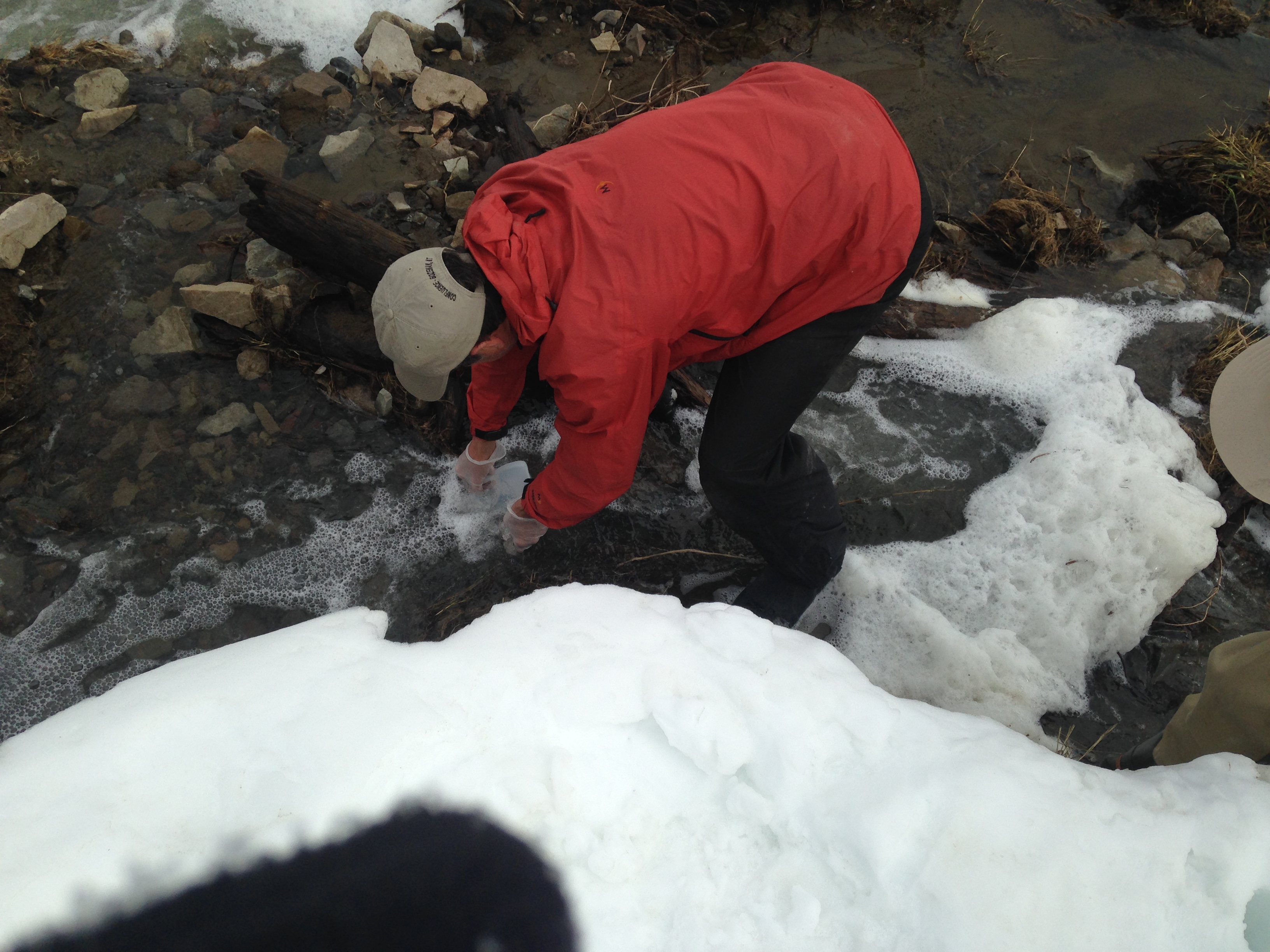The Montana Department of Environmental Quality (DEQ) detected 18 pharmaceutical chemicals and breakdown products in water spilling directly from the Yellowstone Club wastewater pond and 11 chemicals in the downstream tributaries.
On Thursday, March 3, 2016, a mechanical failure in a storage pond for tertiary treated wastewater discharged approximately 30 million gallons of treated effluent into Second Yellow Mule Creek and subsequently the Gallatin River.
The DEQ monitored ten sites daily between March 5 and March 12, 2016. Three of the ten sites were located on streams upstream of the spill to establish background conditions. One sample at each tributary site collected on March 5th and two samples from the spill site collected on March 5th and 6th were analyzed for 46 different pharmaceutical chemicals and breakdown products.

Pharmaceuticals detected by the Montana Department of Environmental Quality after the Yellowstone Club Spill compared to human health screening values from the Minnesota Department of Health.
In the absence of federal and Montana state water quality criteria for pharmaceuticals, the Montana DEQ adopted drinking water standards from the Minnesota Department of Health. Pharmaceutical concentrations measured after the Yellowstone Club Spill were below levels predicted to affect human health.
The DEQ detected an antiobiotic, sulfamethoxazole, at all montoring sites. According to the EPA, sulfamethoxazole is the most commonly detected chemical, and can be found in 77% of rivers, lakes, and streams flowing near urban areas. The highest concentration of an antibiotic, azithromycin, was measured at the pond spill site and represented less than a quarter of the human health standard.
Analyses detected three antibiotics at a background site located on the West Fork of the Gallatin River upstream of the influence of the spill. Although the source of the antibiotics are still unknown, these chemicals may have infiltrated the groundwater system from malfunctioning septic systems located upstream of the spill.
Current research has demonstrated that pharmaceutical chemicals can affect aquatic life, even at very low concentrations. DEQ results recorded an anti-convulsant and mood stabilizer, carbamazepine, and an antibiotic, sulfamethoxazole, at levels that could harm fish and stream insects.
Pharmaceuticals are an emerging pollutant of concern for aquatic ecosystems; however, the Food and Drug Administration (FDA) does not require environmental impact assessments at low concentrations. Therefore, the effects of low concentration pharmaceuticals (and combinations of pharmaceuticals) are still poorly understood.
This is a summary of Part 3 in a series of reports by the Montana Department of Environmental Quality on the impacts to human health and aquatic life of the Yellowstone Club wastewater effluent spill.
Earlier this month, the DEQ issued a notification of violation of the Montana Water Quality Act to the Yellowstone Club. The violations include discharging without a permit and exceeding state standards for sediment and ammonia. This is one of the first steps of the enforcement action.

